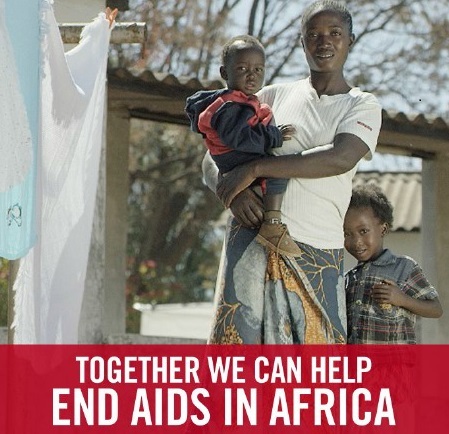Why did one of the world's biggest banks partner with HIV activists trying to eliminate the AIDS pandemic?
That's a question Bank of America often gets when asked about its partnership with (RED) and their efforts through the Global Fund. The answer is simple: All global health pandemics impact global companies.
The more interesting and important question is this: How do we work together to deliver the most positive outcomes? At Bank of America, it's using our expertise, not just our capital, to solve the problem. That's why our partnership with (RED) made a lot of sense.
When (RED) launched in 2006 to enable private sector support of the Global Fund, it was looking for more than just money. It needed something that can be hard to find in the public sector: the marketing and supply-chain expertise that reside in global companies. It was looking for the ability to raise awareness through the images and campaigns that great global companies can create. And (RED) believed that customers of global brands would support and encourage those efforts.
Ten years later, (RED) and its partners have raised more than $350 million for the Global Fund, with 100 percent of that money being used on the ground in Africa to fight AIDS. This means more than 60 million people have been helped by preventive care, testing, counseling and treatment as a result of the work of our partners.
A few years ago, Bank of America joined other (RED) partners who were using their marketing resources and creative teams to spotlight success stories about the pandemic. These stories of lives saved, families kept together and people going to heroic lengths to improve their communities have moved the emotions of the world and inspired people to take action.
This year is a turning point. Medication that once cost $10,000 per year is now only about $100 per year - or about 30 cents a day. New HIV infections among children have fallen by 58 percent. Only 10 years ago, we saw a disease out of control. In 2016, we see hope of an AIDS free generation in five years. That's our goal.
That's why Bank of America is committing another $10 million over the next five years to the Global Fund through (RED), with the marketing, communications and other creative disciplines to engage the world. This money and expertise is not a donation. It's an investment. An investment to raise awareness together, to create disruption together and to make progress together. An investment to continue the work towards a sustainable solution, together.
Ten years later, it's easy to look back and see that (RED) was also on the leading edge of another turning point: the way companies define and deliver on Corporate Social Responsibility. What was once simply philanthropy and volunteerism has now become the way global companies define how we do business through an Environmental, Social and Governance framework, or ESG. It's become our value system and the lens through which we judge our progress. It comes through in the environment we create for employees, the responsible products and services we offer our customers, and the impact we can make in helping local communities around the world thrive.
As (RED) begins its 11th year, it will continue to engage business leaders around the world, experts on the ground and every individual out there who wants to make a difference in this fight. Because to find sustainable solutions, we all have to be in this together.
This post is part of a series produced by The Huffington Post to mark The World Economic Forum's Annual Meeting 2016 (in Davos-Klosters, Switzerland, Jan. 20-23). The theme of this year's conference is "Mastering the Fourth Industrial Revolution." Read all the posts in the series here.
